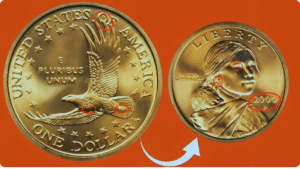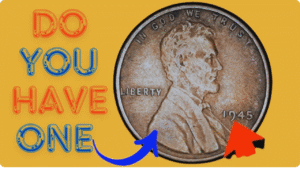Lincoln Wheat Penny: Imagine finding a penny in your pocket worth $49,000! The Lincoln Wheat Penny, a small coin with a big history, is creating a buzz in 2025 as collectors hunt for rare versions that might still be hiding in everyday change. Minted from 1909 to 1958, these pennies show Abraham Lincoln on the front and two wheat stalks on the back. While most are worth just a few cents, some rare ones, like the 1943 bronze penny, can be worth thousands because of minting mistakes. Here’s why this coin is so special and how you can spot one.
A Coin with a Cool History: Lincoln Wheat Penny
The Lincoln Wheat Penny came out in 1909 to celebrate Abraham Lincoln’s 100th birthday. It was the first U.S. coin to feature a real person instead of symbols like Lady Liberty. Designed by Victor David Brenner, it has Lincoln’s face on one side and wheat stalks on the other, giving it the nickname “Wheat Penny.” These coins were used until 1958, and billions were made, so you can still find them in old jars or pocket change. But a few rare ones are what collectors dream about.
This 1999 Georgia Quarter With Misprint Just Hit $10,000 at Auction – Still in Circulation!
Why Some Pennies Are Worth Big Bucks
Not every Wheat Penny is valuable, but certain ones are like hidden treasures. The most famous is the 1943 bronze penny. During World War II, pennies were made from steel to save copper for the war, but a few copper blanks were accidentally used. These mistakes are super rare—only about 20 to 40 are known to exist. One sold for $49,000 at auction, and some have even gone for $840,000! Other valuable ones include the 1909-S VDB (only 484,000 made) and the 1955 Double Die, where the date and words look doubled.
How to Spot a Valuable Penny: Lincoln Wheat Penny
Want to know if you’ve got a $49,000 penny? Here’s what to look for: Lincoln Wheat Penny
- Year and Mint Mark: Check the date and the tiny letter under it. Look for 1943 (especially with an “S” for San Francisco), 1909-S VDB, or 1914-D.
- Magnet Test: For 1943 pennies, use a magnet. Steel pennies stick; the rare bronze ones don’t.
- Weight: A 1943 bronze penny weighs about 3.11 grams, while steel ones are around 2.7 grams.
- Errors: Look for doubled letters or blurry dates, especially on 1955 pennies.
- Condition: Coins in great shape, with clear details and no wear, are worth more.
|
Key Penny |
Why It’s Valuable |
Estimated Value |
|---|---|---|
|
1943 Bronze |
Rare copper error during steel production |
Up to $49,000+ |
|
1909-S VDB |
Low mintage, designer’s initials |
Up to $100,000 |
|
1955 Double Die |
Noticeable doubling on date and letters |
Up to $33,000 |
Are These Pennies Still Out There?
Lincoln Wheat Penny: Yes, it’s possible! Wheat Pennies were never taken out of circulation, so some might still be in your change, old piggy banks, or family coin collections. Stories pop up of people finding valuable pennies at flea markets or in bank rolls. In 2019, a 1943 bronze penny was found in a family stash and sold for over $200,000. While finding a $49,000 penny is rare, it’s not impossible, and that’s what keeps collectors excited.
What to Do If You Find One
Lincoln Wheat Penny: If you think you’ve got a rare penny, don’t clean it—cleaning can lower its value. Put it in a plastic coin sleeve to keep it safe. Use a magnifying glass to check the date and mint mark. (Lincoln Wheat Penny) Take it to a coin dealer or a grading service like PCGS or NGC to confirm it’s real and check its condition. You can sell it through auction houses like Heritage Auctions or on eBay, but get it graded first to get the best price. Beware of fake claims online—stick to trusted sources like the U.S. Mint website or PCGS.
Join the Treasure Hunt: Lincoln Wheat Penny
The Lincoln Wheat Penny is more than just a coin—it’s a piece of American history that could make you rich. Whether you’re a coin collector or just curious, checking your change is a fun way to hunt for treasure. That penny in your pocket might look ordinary, but it could be worth $49,000 or more. So, next time you get some change, take a closer look—you might just find a fortune hiding in plain sight


